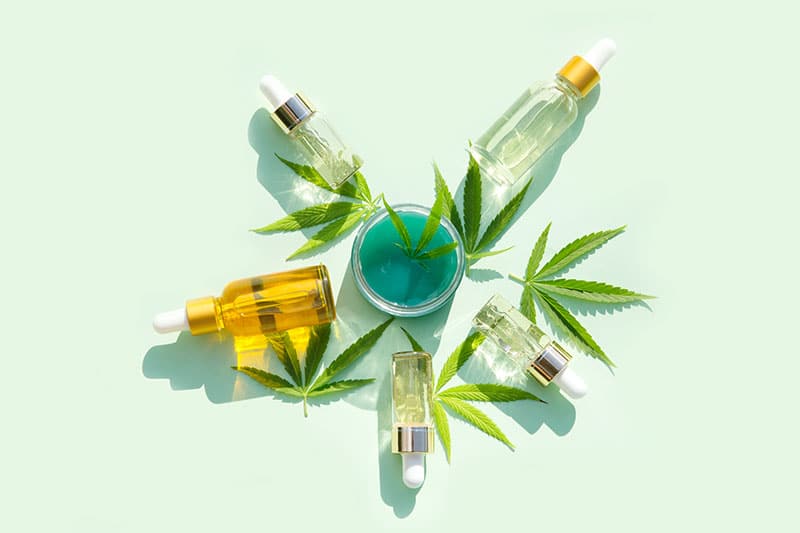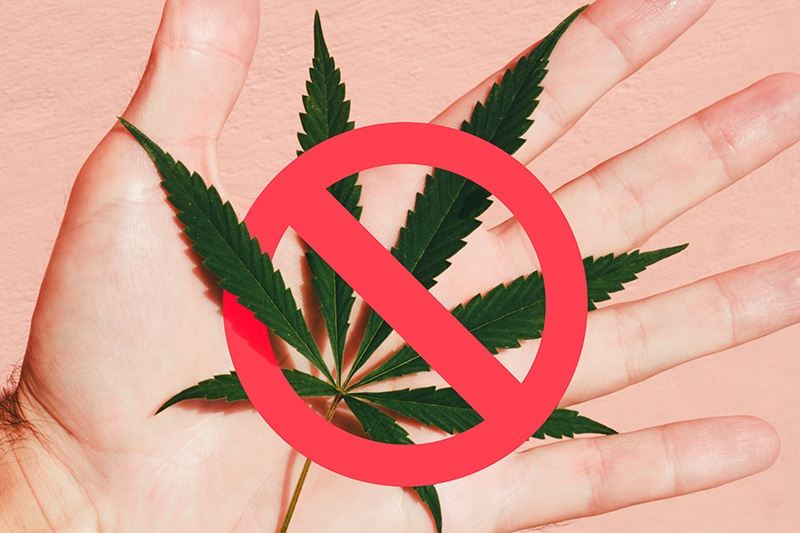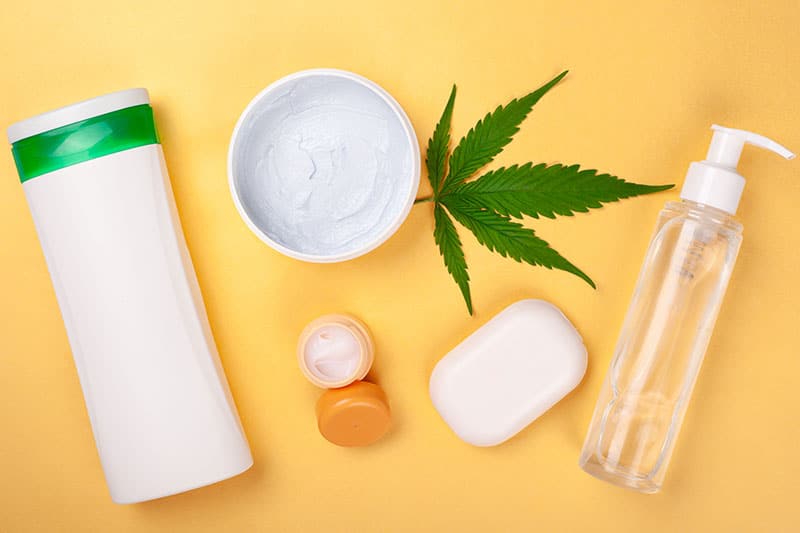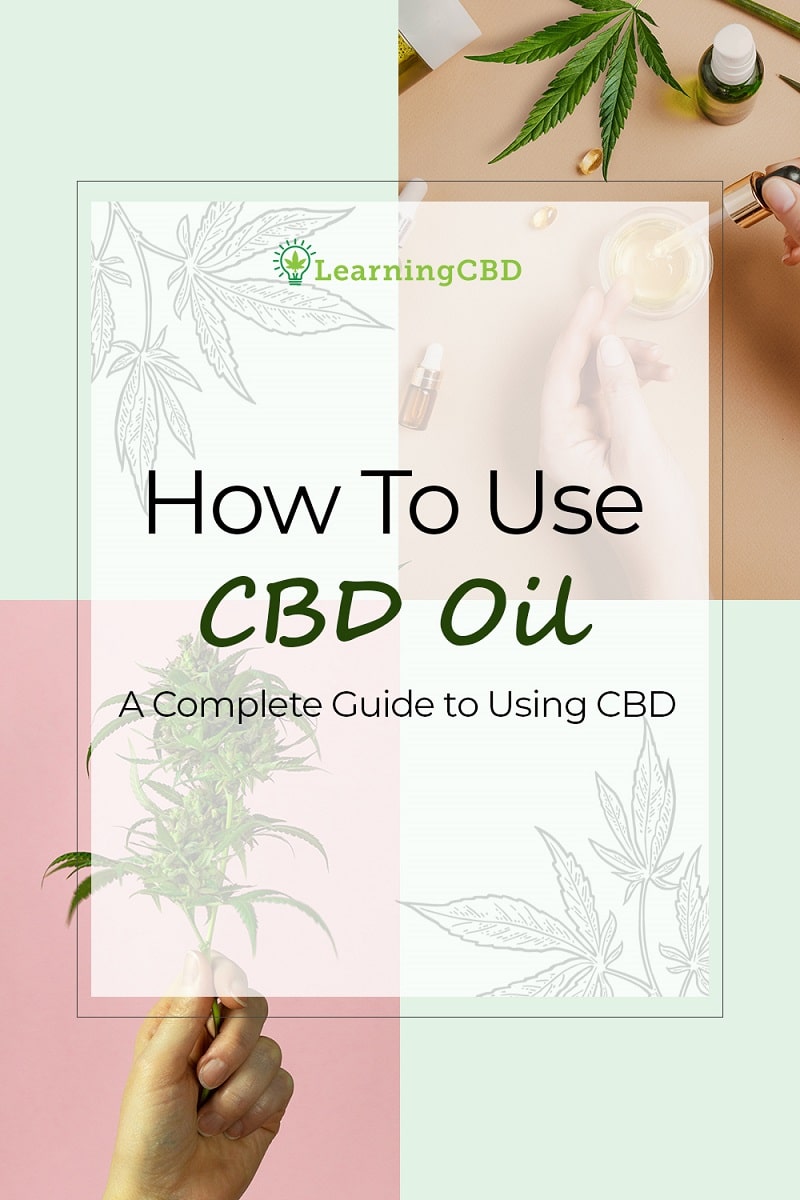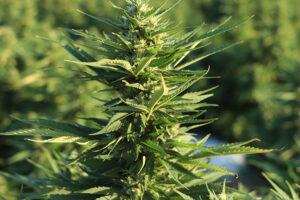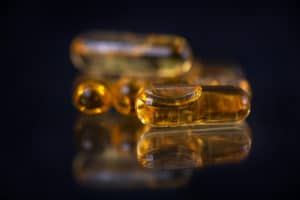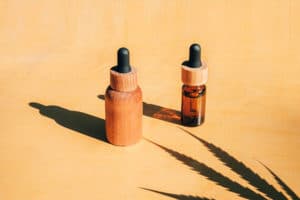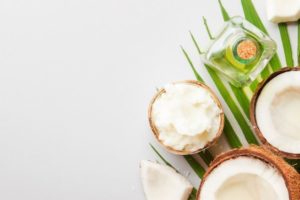Have you heard of CBD? If you have, then you’re probably wondering what it is, what it does, and whether it lives up to the hype. Those who use it swear that it can do everything from relieving pain to reduce stress—and judging by its seemingly sudden popularity, many people are starting to reap its benefits.
But what is CBD? What are its benefits, and what should you look for when shopping for CBD products? How do you know the company you’ve found is reputable? Are there any red flags you should watch for?
In this piece, we’ll cover everything you could want to know about CBD, including:
What Is CBD?
Cannabidiol, or CBD, is just one of the more than 100 cannabinoids found in cannabis.
In total, both industrial hemp and marijuana naturally contain over 560 different phytochemicals. These include phytocannabinoids—like cannabidiol (CBD) and delta-9-tetrahydrocannabinol (THC), but you will also find various terpenes, flavonoids, and essential oils rounding out the plant’s phytochemical profile.
What Are the Benefits of Using CBD?
Cannabidiol is said to reduce pain, relieve stress, reduce inflammation, and elevate mood. However, some people have found it to be useful in regulating sleep, increasing their appetites, and even in combating tumors.
Because cannabidiol interacts with certain neurotransmitters and binds with certain receptors in the endocannabinoid system, it may also help treat symptoms of:
- Schizophrenia
- Diabetes
- post-traumatic stress disorder (PTSD)
- Cognitive decline caused by Alzheimer’s
- Lowering high blood pressure
- Reducing the severity of chronic conditions like fibromyalgia
What Should You Be Looking For?

If you’ve gotten this far, you’re presumably interested in at least trying out CBD for yourself, but how can you tell which CBD companies are reputable?
According to the most recent business forecasts, the CBD industry is slated to exceed $20 billion by the year 2024, and because CBD companies are anxious to carve out a piece of this profitable pie for themselves, entrepreneurs, and corporations alike are developing CBD products at a rapid rate.
Thus, it is entirely up to the consumer to do their due diligence when encountering a prospective CBD vendor. SO, what should you be looking for in a reputable CBD company?
Lab Tests and Certificates of Analysis
First and foremost, any reputable CBD company should make their lab test results and certificates of analysis freely available. Usually, this comes in the form of a downloadable PDF and may even be separated by your product’s batch number. For a great example of that, click here to see Hemlucid’s lab test results.
If a company does not make their certificates of analysis readily available, exercise extreme caution—industrial hemp—from which most CBD-based products are derived—are phytoremediators.
In other words, industrial hemp plants absorb any metals and other contaminants found in the soil around them. While that’s great for cleaning up a radioactive fallout zone, it’s not so great for your tinctures or edibles.
For this reason, at the bare minimum, a certificate of analysis should test for:
- Potency
- Heavy metals
- Microbials
- Fungi
- Mold
- Spores
- Synthetic herbicides
- Fungicides
- Pesticides
- Residual solvents
Last but not least, you should always ensure these tests have been carried out by an independent, third-party laboratory to guarantee that the test results are impartial.
A couple of names to look out for are ProVerde Labs and Botanacor Laboratories. The names of the lab and the person conducting the sample analyses are typically located at the top of each page.
Extraction Methods: Supercritical CO2 vs. Solvent Extraction
Another factor you should take into consideration when buying any CBD products is the extraction method. Essentially, there are two main types of extraction—Supercritical CO2 and solvent-based extraction, e.g., ethanol extraction.
Supercritical CO2 Extraction
For decades, supercritical CO2 extraction has been used in the food and beverage industry to make decaffeinated coffee and tea. Thus, it is a safe and effective method of extracting cannabidiol from industrial hemp. The carbon dioxide used during the extraction process can also be recycled and reused.
What Is Supercritical CO2?
Carbon dioxide, or CO2, is a gas at room temperature. However, once subjected to temperatures of about 88 degrees F (31 degrees C) and a pressure of 1,071 pounds per square inch (PSI), carbon dioxide reaches its supercritical state.
Here, it adopts both the properties of a gas and liquid. More specifically, this supercritical fluid can extract compounds from the plant material like a traditional solvent while passing through it like a gas.
Throughout the CBD industry, supercritical CO2 extraction is considered to be the gold standard. It is highly tunable, which means the temperature and pressure can be adjusted to extract specific compounds.
What’s more, carbon dioxide is remarkably stable and can be released or recompressed once the extraction process is complete. It also leaves behind no residual solvents, which yields a CBD oil extract that is pure.
For this reason, many companies selling high-quality CBD oil extracts will almost always state they use supercritical CO2 in their products.
How Does Supercritical CO2 Extraction Work?
The industrial hemp is packed into an extraction column. Then, supercritical carbon dioxide is passed through the plant material. The CBD oil extract and CO2 pass into a collection chamber, where they separate into their constituent components, after which the CBD oil is ready for further processing, and carbon dioxide can be reused or released.
Solvent-Based Extraction
The second extraction method for CBD oil is solvent-based extraction.
First, what’s a solvent? To put it simply, a solvent is any substance in a solution that is present in a higher concentration.
For example, if you like putting sugar into your morning coffee, sugar and coffee make a solution. Here, the coffee is the solvent, as there is more of it, and the sugar becomes the solute, which is the substance being dissolved.
While there are several different solvents available to manufacturers, the most common options tend to be ethanol and isopropyl alcohol.
While solvent-based extraction is cheaper and more accessible to smaller CBD producers, it doesn’t always yield the best CBD oil extract, and because these substances are highly flammable, extra precautions need to be taken.
How Does Solvent-Based Extraction Work?
First, the solvents are passed through the industrial hemp. Because of their chemical composition, they extract everything, including the plant waxes, chlorophyll, and cannabinoids.
While companies want to extract the cannabinoids and other phytochemicals, the inclusion of chlorophyll is less than desirable. Chlorophyll can cause the resulting CBD oil extract to have a bitter, unpleasant taste.
CBD Isolate, Broad, and Full-spectrum CBD Oil Extracts
The next thing you are likely to encounter when shopping for CBD products are the terms:
- CBD isolate
- Broad-spectrum
- Full-spectrum
- The entourage effect
These terms refer to the number of other cannabinoids and phytochemicals present in your CBD oil.
CBD Isolate
As the name suggests, CBD isolate is pure cannabidiol, and because it’s pure CBD, there will be no psychoactive effects. If you are supplementing your diet with CBD isolate, then you shouldn’t test positive for THC on a drug screen, either.
Broad-Spectrum CBD Oil
In broad-spectrum CBD oil extracts, all the original terpenes, flavonoids, and cannabinoids in the industrial hemp have been kept intact. However, during the extraction process, all the delta-9-tetrahydrocannabinol (THC) has been removed. Most likely, those taking broad-spectrum CBD oil extracts will pass a drug screen.
Full-Spectrum CBD Oil Extracts and the Entourage Effect
Unlike either CBD isolate or broad-spectrum CBD oil extract, full-spectrum CBD oil contains THC. However, because it is derived from industrial hemp, there will be no more than 0.3 percent THC.
According to popular hemp and marijuana lore, full-spectrum oil is best. Because it has all the necessary cannabinoids, terpenes, and flavonoids found in the original plant, these compounds interact synergistically to produce the entourage effect. This simply describes the phenomenon whereby all of the hemp’s phytochemicals work in concert to bring about health and wellness.
Still, it should be noted that this could cause you to fail a drug screen, as they test for THC. For this reason, do be aware when supplementing your diet with full-spectrum CBD oil extracts.
Potency and Dosages
When you first try CBD, you’ll want to read the label and consider a few factors.
First, you’ll want to check the potency of the CBD product you’ve bought or are considering. For example, the label on this NuLeaf Naturals 4,850mg CBD Oil contains:
- 3.38 fluid ounces (100ml) contains 4,850mg of CBD
- Holds about 2,000 drops
- Each drop contains about 2.4mg of cannabidiol
Once you’ve read the label and accounted for the product’s potency, you’ll then want to consider why you’re using CBD oil extract. This is important because, for instance, someone seeking maximum pain relief is going to need a larger dose of high-potency CBD oil than someone without chronic pain.
Then, you’ll want to consider the type of CBD you’re taking. Generally speaking, while edibles typically have the most prolonged effect, taking CBD via inhalation yields the most bioavailable CBD.
What Is Bioavailability?
As you’re researching various CBD products, you’ll come across the term bioavailability, but what is it, and why does it matter?
Bioavailability refers to how much of a substance—cannabidiol, in this case—is present in the bloodstream and available to your body. The more bioavailable a CBD product is, the less you’ll need to use for it to take effect.
In general, inhalation yields the most bioavailable cannabidiol. According to a 2007 meta-analysis by Marilyn A. Huestis, taking CBD through something like a vape pen has a bioavailability of about 56 percent.
The next most bioavailable form of cannabidiol occurs in tinctures. Holding a CBD oil extract as a tincture under your tongue has a bioavailability of up to 35 percent.
Unfortunately, as you expand into other methods, such as oral ingestion and transdermal application, cannabidiol’s bioavailability decreases. Oral ingestion through edibles and beverages has a bioavailability of up to 10 percent.
Why? Because anything you ingest passes through the digestive system before it even circulates through your blood. Because both the chloric acid in the stomach and the liver act upon the cannabidiol, CBD products taken through oral ingestion will take longer to produce results and may not be as effective.
Signs You Should Steer Clear of a CBD Company
So, now that you know what to look for in a potential CBD product, are there any red flags to look out for when buying from the plethora of CBD companies? Yes, and the red flags are less obvious than you would expect.
Synthetic Cannabinoids and Other Synthetic Additives
Synthetic Cannabis: Special K, K2, or Spice
At the top of this list is the very real danger of ingesting synthetic cannabinoids. These are also known as cannabimimetics, but on the street, they’re more colloquially referred to as K2, Special K, herbal incense, or Spice.
These substances mimic natural cannabinoids by binding with the receptors in your brain. While they produce similar effects to the real thing, they pose a very real danger to anyone with preexisting cardiovascular conditions and can induce acute psychosis.
Because this synthetic cannabis starts impacting the user at much lower doses, anyone unaware of the fact they’re ingesting or vaping something containing Special K will be startled, at the very least.
If you accidentally ingest something with Special K, some of the not-so-nice symptoms are:
- Acute psychosis—including delusions and hallucinations
- Paranoia
- Seizures
- Convulsions
- Delirium
- Death
Dextromethorphan
Another synthetic additive you should be aware of is dextromethorphan, which is also known as DXM. DXM is most commonly found in cough medicine and other medications used to bring down fevers.
At pharmacies, you’ll most often see it under these brand names, among others:
- Children’s Robitussin Cough Long-Acting®
- Zicam Cough MAX®
- Babee Cof®
However, it may also be found in combination with other medications, such as:
- Alka-Seltzer Plus Day and Night Cold Formulas®
- PediaCare Children’s Cough and Congestion®
- Robitussin Cough and Chest DM®
Typically, dextromethorphan is used as a cough suppressant either alone or in conjunction with other chemicals. When taken recreationally, it can produce a range of symptoms, depending on how much a person takes. These include:
- Feelings of being out-of-body
- Hallucinations
- Aggression
- Paranoia
- Fevers
- High blood pressure
- Liver damage
- Heart and central nervous system damage
How to Avoid Synthetic Cannabis and DXM
While consumers should always, always look for certificates of analysis from any potential company, these won’t help in detecting either DXM or synthetic cannabinoids—labs only test samples for their potency, microbial contamination, heavy metal contamination, and so forth. So, in theory, a CBD business may have legitimate COAs and still contain these substances.
Because the CBD industry is just now coming into its own and not well-regulated, you, the consumer, must work doubly hard to verify a company’s legitimacy. A simple rule of thumb is that if a company yields 20 results from legitimate news outlets and trade journals after a search engine search, then it’s most likely safe.
With that in mind, be wary of review sites that offer coupon codes or have affiliate relationships with the companies in question. Most of the time, the views expressed are honest, but if the review is unusually positive, then you should take the extra step to verify their claims.
Industrial Hemp Source
As we mentioned earlier, the location from which a CBD company grows or sources its hemp is very important. Because industrial hemp is a phytoremediator, it absorbs everything from the soil in which it is grown. Therefore, if the soil quality was poor, then the resulting CBD oil extract will be inferior as well.
Ideally, a CBD company should disclose the location of the fields where their industrial hemp is grown and the process by which they monitor their plants for quality. Functional Remedies, for instance, owns their farm. What’s more, they’ve developed their proprietary strain of single-origin hemp.
Functional Remedies prides itself on being one of the few, if not only, vertically-integrated CBD companies. This means they have full control over every facet of production, CBD oil extraction, and packaging. Lastly, customers can view certificates of analysis based upon the product’s lot number.
Should I or shouldn’t I?
Before we discuss the hows of using cannabidiol, known as CBD oil, let’s first look at the question of which people should avoid this substance. Scant research exists to determine if there are specific individuals for whom CBD oil is dangerous. Scientists have not conducted a sufficient number of experiments to conclude whether CBD oil is safe for everyone.
For this reason, you should ask your trusted physician before using CBD oil. Below, we provide a list of different conditions that may require some serious considerations before CBD oil usage.
- Pregnant and breastfeeding – Cannabidiol, generally, can be unsafe for those who are pregnant and breastfeeding because of the other ingredients in the products. Research shows that marijuana usage while pregnant may affect the birth weight and size of the baby. For this reason, the American Academy of Pediatrics (AAP) and the American College of Obstetricians and Gynecologists (ACOG) do not recommend the use of cannabis byproducts, including CBD oil.
- Liver complications – If you have liver complications, you should not use CBD—or use it with caution. A clinical study by Epidiolex claimed that children using CBD were more likely to develop elevated liver enzymes (ALT) or inflammation of liver cells. However, these children were also taking medicines that are known to damage the liver. Still, Epidiolex suggests that people with liver conditions should consume lower doses of cannabidiol than healthy individuals.
- Parkinson’s Disease – CBD can relieve Parkinson’s Disease patients from pain, anxiety, depression, and tremors. However, experiments suggested that very high dosages could worsen muscle movements among these patients.
The U.S. Food and Drug Administration (FDA) has approved three cannabis-related drug products, which are only available with a prescription from a licensed healthcare provider, for epileptic seizures and/or for anorexia: Epidiolex, Marinol, and Syndros.
If you’re one of those people who can’t take CBD because of prescription drug interactions and specific supplement intolerances, CBD topical products may be better for you. You can find CBD gels, lotions, and balms in the market. These items can alleviate skin problems and help with your day-to-day body aches.
Ways to Use CBD
Last, but certainly not least, the ways in which you can use CBD oil are almost endless. From edibles and tinctures to vape pens, topicals, and cosmetics, cannabidiol is seemingly everywhere. Read on as we explore the various ways in which you can incorporate CBD for a healthier, more tranquil life.
Sublingual: Tinctures
What Is a Tincture?
As in all other herbal tinctures, a cannabidiol tincture is made by steeping the plant material in high-proof alcohol.
Then, more of the compounds are drawn out by hours of low-heat cooking. Once that process is complete, the liquid is strained, and the high-potency CBD tincture is mixed with a carrier oil.
While some believe carrier oils aid in the body’s absorption of cannabidiol, they also mask the bitter, earthy taste of potent CBD oil. Typically, companies will sell either unflavored tinctures or flavored ones with orange, peppermint, or coconut oils.
How to Use a CBD Tincture
For best results, follow the product’s dosing instructions. Usually, CBD tinctures include a dropper and will specify how many drops to take per dose.
When taking a tincture under your tongue, remember to:
- Follow the company’s dosing instructions.
- Measure the specified number of drops onto your tongue.
- Hold the tincture under your tongue for no less than a minute.
- Then, swallow the remaining CBD tincture.
Oral Ingestion: Edibles, Capsules, and Beverages
Another popular method for using CBD oil is through edibles and beverages. Whether taken in a gummy form or mixed into smoothies or coffee, it’s a convenient, unobtrusive way to incorporate CBD into your daily life.
Because cannabidiol has become somewhat of a panacea for many physiological and psychological conditions, you’ll find CBD-infused snacks, drinks, and even gourmet prix fixe menus almost everywhere.
However, you can also use CBD oil extracts in your home cooking too. Need a light, CBD-infused tomato vinaigrette for that side salad? How about a huge batch of 40 CBD-infused chocolate chip cookies?
The ways to incorporate CBD oil extracts into your lunches, morning coffees, afternoon teas, and smoothies are limited only by your imagination, but when cooking with CBD, keep these tips in mind.
- Heating something containing CBD oil extract over 350 degrees F (176 degrees C) will cause it to degrade.
- Because it’s so delicate, use CBD oil extract only as a finishing oil when possible.
- Always properly dose your CBD oil extract in the same way you would if you were taking it as a tincture.
That being said, if you want a convenient, flavorless, pre-dosed method of taking CBD, gel capsules, or soft gels like these, are a great option.
Topicals: Lotions, Creams, Cosmetics, and Patches
The next way of using CBD oil extract is trans-dermally or via topicals, like patches, lotions, and cosmetics.
Products like this CBD-infused cream often use CBD oil extract in conjunction with other essential oils for a full-body, therapeutic experience. While some people use CBD-infused topicals to moisturize their skin, most use it to ease muscle pain and joint soreness while facilitating the healing of sports injuries.
But should you want a DIY spa day, there are also CBD-infused topicals that are designed with that in mind too. This body scrub, for instance, combines a CBD isolate with brown sugar, apricot kernel, and rose oils.
Inhalation: Vaping
Last but not least, inhalation yields the most bioavailable CBD oil. Inhalation provides fast relief, and the vape juice can be flavored, which makes for a pleasant CBD experience.
In vaping, cannabidiol is blended with other terpenes, and in this case, a special blend of other essential oils. Then, this e-liquid is heated by the vape pen’s battery to about 350 degrees F (177 degrees C).
This process turns the e-liquid into a vapor that is inhaled. The heat decarboxylates the cannabinoids, which transforms them into a form more readily absorbed by the body.
To ensure that you’re making the most of cannabidiol, follow these steps when vaping:
- Follow all manufacturer instructions for operating your vape pen
- Preheat the pen as per these instructions
- Once it has been heated, hold down the button while taking a drag from the pen
- Start with short puffs
- Wait a few minutes between each puff to see how vaping CBD affects you
How do I calculate the right dosage?
If you want to consume CBD products, you must know how to calculate the right dosage. This way, you can scientifically plan your dosages and get the CBD’s full benefits without wasting your resources.
Here are the two known types of CBD dosage calculators:
- Traditional CBD Dosage Chart or Table – In this calculator, you will use a chart or table as your reference and perform some basic math to measure the right dosage for yourself.
- Online CBD Dosage Calculator – An online calculator is an easier method to use than a table calculator. In this method, all you need to do is input relevant information, including your weight, to get an appropriate result online.
If you’re a rookie, you need to begin slowly before increasing your dosage. To avoid serious adverse effects, you may want to stay at one level for about a week before an increase. According to Lindsay Slowiczek, PharmD, you should only increase CBD intake as recommended by your doctor.
Is it possible to use too much CBD?
While it’s possible to take in too much CBD, there are no reported cases of people abusing CBD since it generally doesn’t have addictive properties. People generally only take large dosages of CBD to improve their health conditions—mainly to fight stress and anxiety.
According to WebMD, people have safely consumed oral doses of up to 300 mg daily for up to six months and 1200-1500 mg daily for up to four weeks, with no danger or ill effects. The site reports some side effects of CBD as dry mouth, low blood pressure, light-headedness, and drowsiness, with no reports of CBD overdose.
What are the side effects of using CBD oil?
Because of the nature of how cannabinoids work in the body, CBD oil can have varying reactions in every user. Like other supplements, or foods like milk or peanuts, CBD may also create side effects depending on a person’s intolerances.
In a medical study in the U.S. participated involving more than 2,000 individuals, participants noted a minimum of 1,300 side effects. Researchers considered 700 of these 1,300 cases as adverse side effects.
Some of the most common side effects of CBD usage include:
- Reddened eyes
- Sedation/fatigue
- Enhanced state of euphoria
- Dry mouth
- Increased hunger
Even though these side effects are not detrimental, they may not be pleasant for the user. At present, no reports exist of any grave medical emergencies caused by CBD. Nonetheless, checking with your physician is essential to avoid any adverse reactions in the future, especially if you have pre-existing medical conditions.
In Conclusion: What type of CBD should I use if I’m a beginner in using CBD oil?
If you haven’t used CBD oil before, you may want to investigate the origin and the purity of the CBD that you’re planning to use. We’ve listed a few questions that you should probably ask before purchasing CBD oil.
Where did this CBD oil come from?
With new brands and merchandisers of CBD products flooding the market, along with the phenomenal growth of the online CBD market, it is very challenging for a newcomer to discern what is truth and what is hype in CBD information.
The origin of the product is essential to ensure its overall quality, along with the process used to extract and refine it. Regarding origin, the question of where it has been grown is a critical one. Ramya Rams of The Chicago Tribune advises looking on the manufacturer’s or retailer’s website to find this information. Rams also notes, “If you are buying CBD oil in the United States, you can be assured of quality as farmers in the country are required to become certified by the State Departments of Agriculture before their product is sold.”
Is CBD oil organic?
An organic CBD oil means that chemicals from pesticides and fertilizers did not negatively affect the soil where the hemp grew. Some people have reported experiencing allergic reactions to plants (fruits and vegetables) treated by chemical-induced fertilizers and pesticides.
Is there third-party testing to ensure the CBD’s safety?
This is the most important question to ask when buying CBD oils. If a CBD manufacturer doesn’t hire a third-party tester, the products may be dangerous for the user’s health.
Third-party testing companies test for different factors, including:
- Pesticides
- Solvents
- Cannabinoid profiles
- Terpene profiles
- Heavy metal contamination
As for the types of CBD oils, you can choose from three options:
- CBD isolate – This is the most saturated type of oil. This type only has CBD and carrier oil as ingredients.
- Full-Spectrum CBD Oil – This type contains vitamins, minerals, and healthy fats. It also has a bit of THC, which can induce hallucinations.
- Broad-Spectrum Oil – This is similar to a full-spectrum CBD oil but without the THC component.
To conclude, we hope that the considerations we’ve included in this article will help you to make the wisest and most well-informed choice about your personal usage of CBD.
FAQs About How To Use CBD Oil
Question: How to use CBD oil?
Answer: Some of the common ways to use CBD oil are through tinctures, oral ingestion, topicals, and inhalation.
Question: What type of CBD should I use if I’m a beginner in using CBD oil?
Answer: Some of the things you want to take a look before buying CBD oil for the first time are the CBD lab reports, how the product was made, and the type of CBD oil you will going to use. Only use CBD that is organic and third-party tested. As for the type, it will depend on what illness you are treating.
Question: What is CBD?
Answer: Cannabidiol, or CBD, is just one of the more than 100 cannabinoids found in cannabis.
Question: What are the benefits of using CBD?
Answer: some of the most common benefits of using CBD products reduce pain, relieve stress, reduce inflammation, and elevate mood. However, some people have found it to be useful in regulating sleep, increasing their appetites, and even in combating tumors.
Question: What should you look for in buying CBD products?
Answer: You should check for lab tests done and certificates of analysis on CBD products before buying. This ensures that the quality you will get is premium.
Question: How do I calculate the right dosage?
Answer: There are two known common types of dosage calculator namely CBD dosage chart or online CBD dosage calculator. If you’re a rookie, you need to begin slowly before increasing your dosage. To avoid serious adverse effects, you may want to stay at one level for about a week before an increase. According to Lindsay Slowiczek, PharmD, you should only increase CBD intake as recommended by your doctor.
Question: What type of person can’t use or need medical advice before using CBD?
Answer: Women who are breastfeeding or pregnant, a person with liver complications, and the person with Parkinson’s Disease are some of the people that should seek medical advice before trying CBD.
Question: What is Bioavailability in CBD?
Answer: Bioavailability refers to how much of a substance—cannabidiol, in this case—is present in the bloodstream and available to your body. The more bioavailable a CBD product is, the less you’ll need to use for it to take effect.
Question: Is it possible to use too much CBD?
Answer: While it’s possible to take in too much CBD, there are no reported cases of people abusing CBD since it generally doesn’t have addictive properties. People generally only take large dosages of CBD to improve their health conditions—mainly to fight stress and anxiety.
Question: What should you avoid in CBD products?
Answer: The top of this list is the very real danger of ingesting synthetic cannabinoids. These are also known as cannabimimetics, but on the street, they’re more colloquially referred to as K2, Special K, herbal incense, or Spice.
Question: How to Avoid Synthetic Cannabis and DXM?
Answer: Make sure to buy only in reputable companies. Also, ask for a certificate of analysis to make sure they do not use synthetic cannabis.
